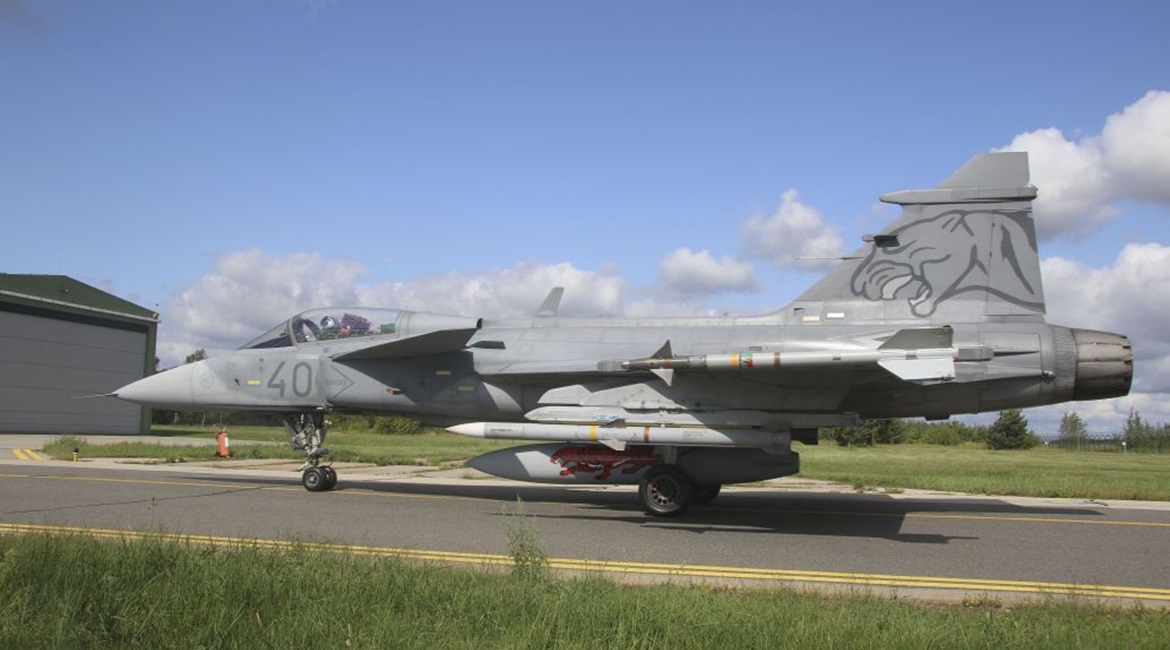
Hungarian Air Force (HuAF) Saab JAS 39C Gripens returned home on 2 September following a four-month deployment to Šiauliai Air Base, Lithuania, during which airmen found the Litening targeting pod and new data links to be especially valuable.
As part of NATO’s Baltic Air Policing commitment, four Gripens armed with two Air Intercept Missile (AIM)-120C5 Advanced Medium Range Air-to-Air Missiles (AMRAAMs) and two shorter-range AIM-9L Sidewinder AAMs stood on a persistent Quick Reaction Alert (QRA) to defend the airspace of Estonia, Latvia, and Lithuania. One of each pair standing the alert was also equipped with a Litening III laser designator pod.
As the lead nation, the HuAF remained on full-time QRA throughout its mission, whereas the other two detachments – comprising Spanish Air Force EF-18M Hornets co-located at Šiauliai, and UK Royal Air Force Typhoons at Ämari, Estonia – worked in tandem, taking one week off (cold) and one week on (hot).
According to the detachment commander, Brigadier General Csaba Ugrik, it was a busy deployment. “We flew over 400 sorties, including 43 Alpha scrambles that saw us intercept over 50 Russian military aircraft.”

A Hungarian Air Force JAS 39C Gripen, armed with two AIM-120C5 AMRAAMs and two AIM-9L Sidewinders, taxies to its alert barn after a scramble. (Alan Warnes)
There was a variety of types intercepted, including Sukhoi Su-24M/MRs, Su-27Ps, Su-30SMs, Su-34s, and Su-35s armed with new beyond visual range AA-12 Adder AAMs; as well as transports and high-value assets such as Antonov An-12, An-24, An-26 aircraft; Beriev A-50; Ilyushin Il-18 Coot Il-20/Il-22 Coot A/Bs, navy Il-38 May, and Il-76; and Tupolev Tu-134, Tu-142, Tu-154, and Tu-214R aircraft, according to the HuAF.
Looking to read the full article?
Gain unlimited access to Janes news and more...




